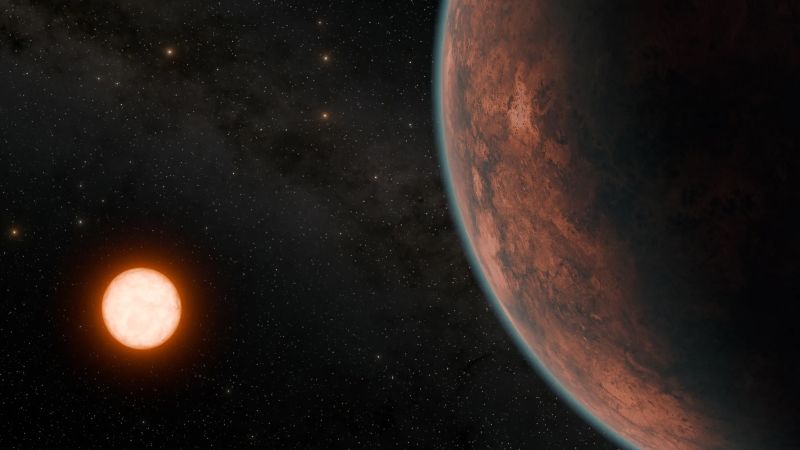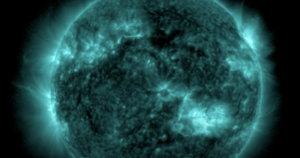R. Hurt/JPL-Caltech/NASA
Gliese 12b orbits a cold red dwarf star just 40 light-years away.
Sign up for CNN’s Wonder Theory science newsletter. Explore the universe with news of fascinating discoveries, scientific breakthroughs and more.
CNN
—
Two teams of scientists have discovered a theoretically habitable planet, smaller than Earth but larger than Venus, orbiting a small star about 40 light-years away.
The exoplanet, called Gliese 12b, orbits a cool red dwarf star located in the constellation Pisces and is about 27% the size of our sun and 60% its temperature, according to the two studies published Thursday in The Astrophysical Journal Letters and Monthly Notices of The Royal Astronomical Society.
Because its star is much smaller than the sun, Gliese 12b still falls within the habitable zone—the ideal distance from a star where liquid water can exist—even though it completes its orbit every 12.8 days.
Working on the assumption that the exoplanet has no atmosphere, scientists calculated its surface temperature to be about 107 degrees Fahrenheit (42 degrees Celsius).
“We found the closest, transiting, moderate Earth-sized world found so far,” said Masayuki Kuzuhara, a project assistant at the Tokyo Center for Astrobiology and co-leader of one of the research teams with Akihiko Fukui, assistant professor of project at the University of Tokyo, in a statement.
Once temperate Earth-sized planets are identified, scientists can analyze them to determine what elements are in their atmospheres and, most importantly, whether there is water to support life.
“There are only a few (exoplanets) that we’ve found that are good candidates for that.” And it’s the closest we have, and so it’s a pretty big discovery,” Larissa Pailthorpe, a doctoral student at the University of Edinburgh and University College London who led the other study, told CNN on Friday.
Understanding Gliese 12b
To spot Gliese 12b, scientists used publicly available data collected by NASA’s Transiting Exoplanet Survey Satellite (TESS), a telescope that stares at tens of thousands of stars each month, tracking changes in their brightness that could be evidence for orbiting exoplanets.
It is easier for astronomers to find exoplanets orbiting red dwarf stars because their relatively small size results in a greater dimming effect during each transit.
Currently, scientists are not sure exactly what this planet’s atmosphere is, if it even has one, and if it has water, although Pailthorpe said they don’t expect to find water there.
“It’s possible that there’s no water, and then we know that a greenhouse effect has already happened on this planet, and it’s more like Venus,” she said. “It could have water, in which case it’s more like us … or there are signatures that could be detectable that could show you that the greenhouse effect is going on, so it could be losing water.”
For the next stage of analyzing the exoplanet’s atmosphere, scientists hope to use the James Webb Space Telescope and conduct a spectroscopic analysis. This method involves capturing starlight that shines through an exoplanet’s atmosphere and seeing which wavelengths are absorbed by certain molecules, revealing their presence in the atmosphere.
As well as shedding light on the exoplanet itself, Palethorpe said scientists hope this work can help us better understand our own planet.
“What this planet will teach us in particular is what happened to Earth to remain habitable, but Venus not… It can tell us the habitability paths that planets take as they evolve,” said she.
But even though the exoplanet could potentially be habitable for humans and is relatively “close” to our solar system in astronomical terms, it’s unlikely that anyone will visit it anytime soon.
“It can’t be reached, it’s 12 parsecs away,” Palethorpe said, adding that it would take about 225,000 years to reach Gliese 12b with the fastest spacecraft currently in existence.



